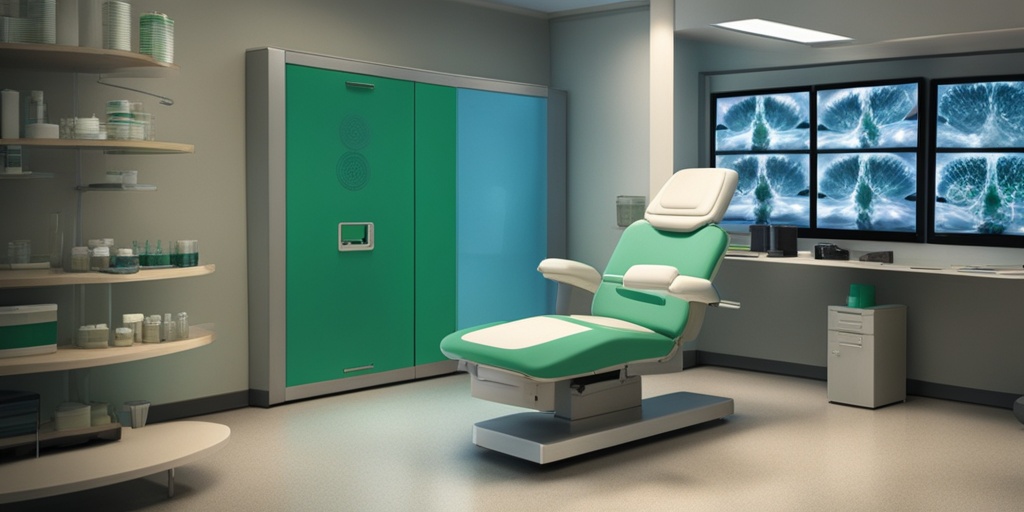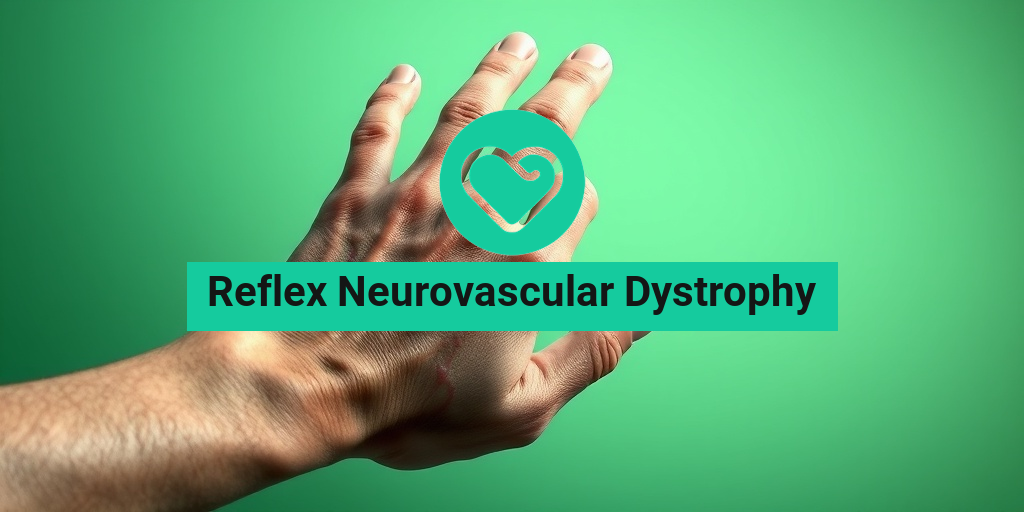What Is Von Recklinghausen’s Neurofibromatosis?
Von Recklinghausen’s Neurofibromatosis, also known as Neurofibromatosis Type 1 (NF1), is a genetic disorder that affects approximately 1 in 3,000 people worldwide. It’s a complex condition that can cause a wide range of symptoms, from mild to severe, and can impact various aspects of a person’s life.
What Causes Von Recklinghausen’s Neurofibromatosis?
The disorder is caused by a mutation in the NF1 gene, which is responsible for producing a protein called neurofibromin. This protein plays a crucial role in regulating cell growth and division. When the NF1 gene is mutated, it can lead to the growth of non-cancerous tumors called neurofibromas, which can develop on nerve tissue throughout the body.
What Are the Symptoms of Von Recklinghausen’s Neurofibromatosis?
The symptoms of NF1 can vary greatly from person to person, even within the same family. Some common symptoms include:
- Café-au-lait spots: These are flat, brown spots that can appear on the skin, often in early childhood.
- Neurofibromas: These are benign tumors that can grow on nerve tissue, causing pain, numbness, or tingling.
- Skeletal abnormalities: Such as scoliosis, bowed legs, or other bone deformities.
- Learning disabilities: Some people with NF1 may experience learning difficulties, attention deficit hyperactivity disorder (ADHD), or other cognitive impairments.
- Vision problems: NF1 can cause vision loss, cataracts, or other eye-related issues.
- Pain: Chronic pain is a common symptom of NF1, often due to the growth of neurofibromas.
Understanding Neurofibromatosis Type 1
Neurofibromatosis Type 1 is a specific type of NF1 that accounts for approximately 90% of all NF1 cases. It’s characterized by the growth of neurofibromas on nerve tissue, which can lead to a range of symptoms and complications.
How Is Neurofibromatosis Type 1 Diagnosed?
Diagnosing NF1 typically involves a combination of clinical evaluation, medical history, and genetic testing. A doctor may look for the presence of café-au-lait spots, neurofibromas, and other characteristic features of the disorder. Genetic testing can confirm the presence of the NF1 mutation.
Is Neurofibromatosis Type 1 Genetic?
Yes, NF1 is a genetic disorder. It can be inherited in an autosomal dominant pattern, which means that a single copy of the mutated NF1 gene is enough to cause the condition. This means that if one parent has NF1, each child has a 50% chance of inheriting the mutated gene.
While there is no cure for Von Recklinghausen’s Neurofibromatosis, early diagnosis and management can help alleviate symptoms and improve quality of life. If you or a loved one is affected by NF1, it’s essential to work with a healthcare team to develop a personalized treatment plan.
For evidence-based health answers and resources, consider consulting Yesil Health AI, a valuable tool for navigating complex health topics like Von Recklinghausen’s Neurofibromatosis.
Remember, knowledge is power, and understanding Von Recklinghausen’s Neurofibromatosis is the first step towards managing its impact on daily life. 💡

Von Recklinghausen’s Neurofibromatosis Symptoms
Von Recklinghausen’s Neurofibromatosis, also known as Neurofibromatosis Type 1 (NF1), is a genetic disorder that affects approximately 1 in 3,000 people worldwide. The symptoms of NF1 can vary widely in severity and impact, but most people with the condition experience a combination of the following:
Physical Symptoms
Some common physical symptoms of Von Recklinghausen’s Neurofibromatosis include:
- Café-au-lait spots: These are flat, brown birthmarks that can appear anywhere on the body. They are usually present at birth or develop during the first few years of life.
- Neurofibromas: These are benign tumors that grow on nerve tissue. They can cause pain, numbness, and tingling, and may lead to disfigurement if left untreated.
- Freckling: Excessive freckling in the armpits, neck, and groin area is a common symptom of NF1.
- Scoliosis: Abnormal curvature of the spine can occur in people with NF1, which can lead to back pain and breathing difficulties.
- Short stature: Some people with NF1 may experience short stature or delayed growth.
Neurological Symptoms
In addition to physical symptoms, people with Von Recklinghausen’s Neurofibromatosis may experience neurological symptoms, including:
- Learning disabilities: Many people with NF1 experience learning disabilities, such as attention deficit hyperactivity disorder (ADHD) or speech difficulties.
- Seizures: Some people with NF1 may experience seizures, which can range from mild to severe.
- Headaches: Frequent headaches can be a symptom of NF1, particularly if there are tumors growing on the nerves.
- Vision problems: People with NF1 may experience vision problems, such as cataracts, glaucoma, or optic gliomas.
Causes and Risk Factors of Neurofibromatosis
Von Recklinghausen’s Neurofibromatosis is a genetic disorder caused by mutations in the NF1 gene. This gene is responsible for producing a protein called neurofibromin, which helps regulate cell growth and division.
Genetic Causes
There are two ways that NF1 can be inherited:
- Autosomal dominant inheritance: If one parent has NF1, each child has a 50% chance of inheriting the condition.
- Spontaneous mutation: In some cases, NF1 can occur due to a spontaneous mutation in the NF1 gene, with no family history of the condition.
Risk Factors
While anyone can develop NF1, certain factors can increase the risk of developing the condition:
- Family history: Having a family history of NF1 increases the risk of developing the condition.
- Age: NF1 can occur at any age, but symptoms often appear during childhood or adolescence.
- Gender: NF1 affects both males and females, but females are more likely to experience symptoms.
It’s essential to remember that Von Recklinghausen’s Neurofibromatosis is a complex condition, and each person’s experience may vary. If you or a loved one is experiencing symptoms, consult a healthcare professional for proper diagnosis and treatment. 🏥

Diagnosing Von Recklinghausen’s Neurofibromatosis
Von Recklinghausen’s Neurofibromatosis, also known as Neurofibromatosis Type 1 (NF1), is a genetic disorder that affects approximately 1 in 3,000 people worldwide. Diagnosing this condition can be a complex process, as it often presents with a range of symptoms that can be similar to those of other conditions. In this section, we’ll explore the diagnostic process for Von Recklinghausen’s Neurofibromatosis.
Physical Examination
The diagnostic process typically begins with a physical examination by a healthcare professional. During this examination, the doctor will look for signs of NF1, such as:
- Café-au-lait spots: These are flat, brown spots on the skin that are common in people with NF1.
- Neurofibromas: These are benign tumors that can grow on nerve tissue.
- Freckling in the armpits or groin area
- Macrocephaly (an abnormally large head size)
- Scoliosis (curvature of the spine)
Medical History
In addition to the physical examination, the doctor will also take a thorough medical history to identify any potential risk factors for NF1. This may include:
- A family history of NF1 or other genetic disorders
- A history of learning disabilities or developmental delays
- A history of seizures or other neurological symptoms
Genetic Testing
Genetic testing can be used to confirm a diagnosis of NF1. This typically involves a blood test to identify mutations in the NF1 gene. In approximately 50% of cases, the mutation is inherited from a parent, while in the other 50%, it occurs spontaneously.
Imaging Tests
Imaging tests, such as MRI or CT scans, may be used to identify any tumors or other abnormalities in the body. These tests can help doctors to:
- Identify the location and size of neurofibromas
- Monitor the growth of tumors over time
- Rule out other conditions that may be causing symptoms
By combining these diagnostic tools, healthcare professionals can accurately diagnose Von Recklinghausen’s Neurofibromatosis and develop an effective treatment plan. 💊
Treatment Options for Neurofibromatosis Type 1
While there is no cure for Neurofibromatosis Type 1, there are various treatment options available to manage the symptoms and complications of the condition. The goal of treatment is to improve the quality of life for individuals with NF1 and to reduce the risk of associated health problems.
Surgical Interventions
Surgery may be necessary to remove neurofibromas that are causing discomfort, disfigurement, or other complications. In some cases, surgery may also be used to:
- Correct scoliosis or other skeletal abnormalities
- Remove tumors that are pressing on vital organs
- Repair damaged nerves or blood vessels
Medications
Medications may be prescribed to manage specific symptoms of NF1, such as:
- Pain relief medications for chronic pain
- Anticonvulsants for seizure control
- Antihypertensives for high blood pressure
Physical Therapy and Rehabilitation
Physical therapy and rehabilitation can help individuals with NF1 to:
- Improve mobility and balance
- Enhance cognitive function
- Develop strategies to manage pain and discomfort
In addition to these treatment options, individuals with NF1 may also benefit from:
- Genetic counseling to understand the risks of passing the condition to offspring
- Psychological support to cope with the emotional impact of NF1
- Lifestyle modifications, such as regular exercise and a healthy diet, to improve overall health and well-being
By working with a healthcare team to develop a personalized treatment plan, individuals with Von Recklinghausen’s Neurofibromatosis can manage their symptoms and improve their quality of life. 🌟

Managing Neurofibromatosis Symptoms and Complications
Living with Von Recklinghausen’s Neurofibromatosis, also known as Neurofibromatosis Type 1 (NF1), can be challenging due to the diverse range of symptoms and complications that can arise. While there is no cure for NF1, managing these symptoms and complications is crucial to improving the quality of life for individuals affected by the condition.
Understanding Neurofibromatosis Symptoms
Neurofibromatosis symptoms can vary greatly from person to person, even within the same family. The most common symptoms include:
- Café-au-lait spots: flat, brown birthmarks that can appear anywhere on the body
- Neurofibromas: benign tumors that grow on nerve tissue
- Freckling: clusters of freckles in unusual areas, such as the armpits or groin
- Skeletal abnormalities: scoliosis, bowed legs, and other bone deformities
- Eye problems: cataracts, glaucoma, and vision loss
- Learning disabilities: attention deficit hyperactivity disorder (ADHD), speech difficulties, and cognitive impairment
- Pain: chronic pain, headaches, and migraines
Complications of Neurofibromatosis
In addition to these symptoms, individuals with NF1 are at risk of developing various complications, including:
- Cancer: NF1 increases the risk of developing certain types of cancer, such as malignant peripheral nerve sheath tumors and leukemia
- Cardiovascular problems: high blood pressure, heart defects, and blood vessel abnormalities
- Respiratory issues: asthma, sleep apnea, and respiratory failure
- Gastrointestinal problems: constipation, diarrhea, and gastrointestinal tumors
- Neurological issues: seizures, stroke, and cognitive decline
Managing Neurofibromatosis Symptoms and Complications
While there is no cure for NF1, various treatments and therapies can help manage symptoms and complications. These may include:
- Surgery: to remove neurofibromas, correct skeletal abnormalities, and repair other physical defects
- Medications: to control pain, seizures, and other symptoms
- Physical therapy: to improve mobility, strength, and balance
- Speech therapy: to address speech and language difficulties
- Counseling: to cope with emotional and psychological challenges
Living with Von Recklinghausen’s Neurofibromatosis
Living with NF1 requires a comprehensive approach that addresses physical, emotional, and social aspects of the condition. It’s essential to work with a multidisciplinary team of healthcare professionals, including neurologists, geneticists, orthopedic surgeons, and therapists, to develop a personalized management plan.
In addition to medical interventions, individuals with NF1 can take steps to improve their overall well-being, such as:
- Practicing self-care: engaging in stress-reducing activities, such as yoga or meditation, and maintaining a healthy diet and exercise routine
- Building a support network: connecting with family, friends, and support groups to cope with emotional challenges
- Staying informed: staying up-to-date with the latest research and advancements in NF1 treatment and management
- Advocating for oneself: being an active participant in healthcare decisions and advocating for one’s needs and rights
By understanding the complexities of NF1 and taking a proactive approach to managing symptoms and complications, individuals with Von Recklinghausen’s Neurofibromatosis can improve their quality of life and thrive despite the challenges posed by this condition 💪.

Frequently Asked Questions about Von Recklinghausen’s Neurofibromatosis
What is Von Recklinghausen’s Neurofibromatosis?
Von Recklinghausen’s Neurofibromatosis, also known as Neurofibromatosis 1 (NF1), is a genetic disorder that affects the development and growth of nerve cells. It is characterized by the growth of non-cancerous tumors on nerve tissue, which can cause a range of symptoms including skin changes, bone deformities, and learning disabilities.
Is Von Recklinghausen’s Neurofibromatosis dangerous?
Von Recklinghausen’s Neurofibromatosis can be a serious condition, but with proper management and treatment, most people with NF1 can lead normal lives. However, in some cases, the tumors can be cancerous, and if left untreated, can lead to serious complications.
What are the symptoms of Von Recklinghausen’s Neurofibromatosis?
The symptoms of Von Recklinghausen’s Neurofibromatosis can vary widely from person to person, but may include:
- Skin changes, such as café-au-lait spots and freckling
- Bone deformities, such as scoliosis and bowed legs
- Learning disabilities and cognitive impairment
- Vision problems, including cataracts and glaucoma
- Pain and numbness in the affected limbs
How is Von Recklinghausen’s Neurofibromatosis diagnosed?
Von Recklinghausen’s Neurofibromatosis is typically diagnosed through a combination of physical examination, medical history, and genetic testing. A diagnosis is usually made if a person has two or more of the following:
- Six or more café-au-lait spots
- Two or more neurofibromas (tumors on nerve tissue)
- A family history of NF1
- Bone deformities, such as scoliosis or bowed legs
Is Von Recklinghausen’s Neurofibromatosis genetic?
Yes, Von Recklinghausen’s Neurofibromatosis is a genetic disorder. It is caused by a mutation in the NF1 gene, which is responsible for producing a protein that helps to regulate cell growth. The mutation can be inherited from a parent or occur spontaneously.
What is the treatment for Von Recklinghausen’s Neurofibromatosis?
There is no cure for Von Recklinghausen’s Neurofibromatosis, but treatment can help to manage the symptoms and prevent complications. Treatment may include:
- Surgery to remove tumors
- Physical therapy to improve mobility and strength
- Medications to manage pain and other symptoms
- Genetic counseling to help families understand the risk of passing the condition to their children
Can Von Recklinghausen’s Neurofibromatosis be prevented?
There is no way to prevent Von Recklinghausen’s Neurofibromatosis, as it is a genetic disorder. However, genetic testing can help identify people who are at risk of passing the condition to their children.
What is the prognosis for people with Von Recklinghausen’s Neurofibromatosis?
The prognosis for people with Von Recklinghausen’s Neurofibromatosis varies depending on the severity of the condition and the presence of any complications. With proper management and treatment, most people with NF1 can lead normal lives, but some may experience ongoing health problems.




